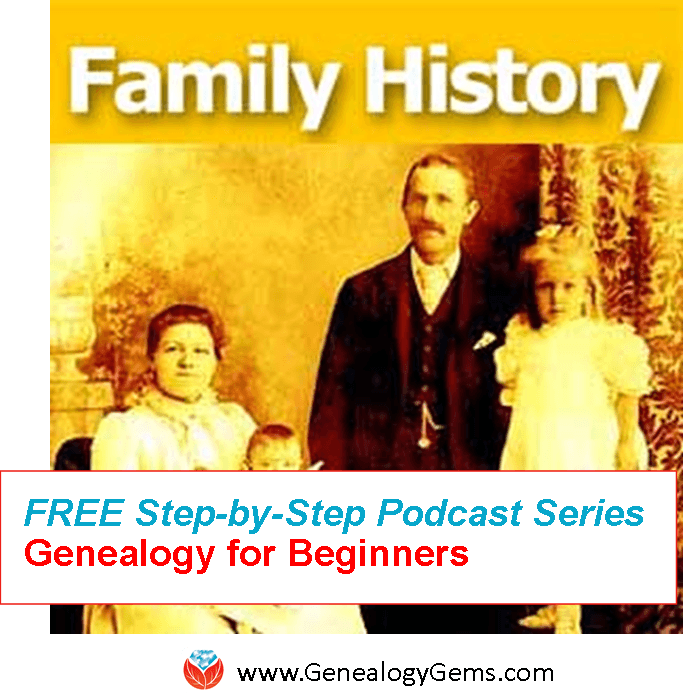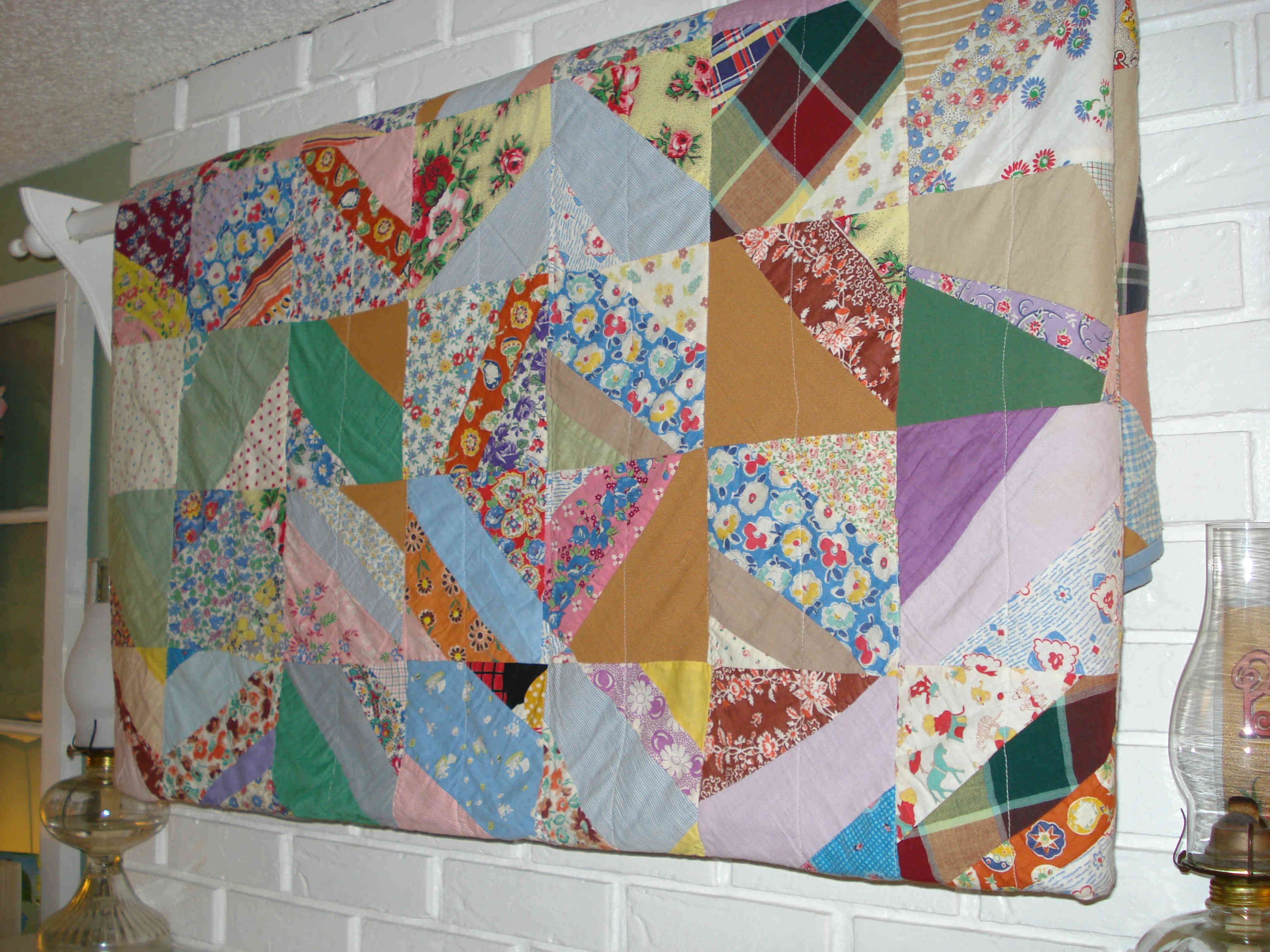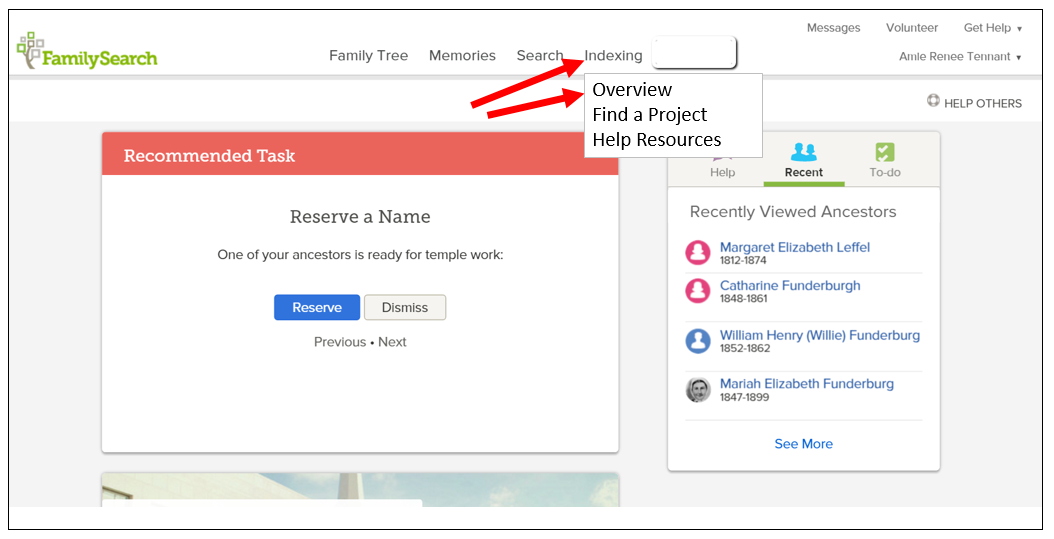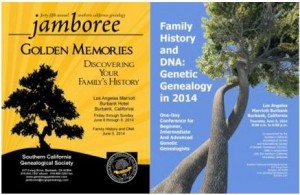by Lisa Cooke | Jan 28, 2014 | Family History Podcast

Listen to the Family History: Genealogy Made Easy podcast by Lisa Louise Cooke. It’s a great series for learning the research ropes and well as refreshing your skills.
Originally published 2009
Republished January 28, 2014
[display_podcast]
Download the Show Notes for this Episode
Welcome to this step-by-step series for beginning genealogists—and more experienced ones who want to brush up or learn something new. I first ran this series in 2008-2009. So many people have asked about it, I’m bringing it back in weekly segments.
Episode 16:
In our first segment we’re going to get acquainted with the largest repository of genealogy materials in the world: The Family History Library in Salt Lake City, Utah. It’s free and available to the public and I’m going to get you ready to make good use of it through the online Family History Library catalog. Click on the show notes link, above, to read some great updates since the episode aired on how to use the online catalog and growing collection of digital records.
Then in our second segment my guest is Don R. Anderson, Director of the Family History Library, who describes the evolving direction of the Family History Library and its host site, FamilySearch.org.
Links
FamilySearch
Family History Library Catalog
by Lisa Cooke | Jan 21, 2014 | 01 What's New, Family History Podcast, Interviewing

Listen to the Family History: Genealogy Made Easy podcast by Lisa Louise Cooke. It’s a great series for learning the research ropes and well as refreshing your skills.
Originally published 2009
Republished January 21, 2014
[display_podcast]
Download the Show Notes for this Episode
Welcome to this step-by-step series for beginning genealogists—and more experienced ones who want to brush up or learn something new. I first ran this series in 2008-09. So many people have asked about it, I’m bringing it back in weekly segments.
Episode 15: Genealogy Cold Calling II: 14 Tips for Contacting Distant Relatives
Connecting with someone who knows about our ancestors can really boost our research results—and even create new relationships among living kin. But it’s not always easy to send that first email or make that call.
In today’s episode we talk about the skill of “genealogical cold calling.” Relationships are key to genealogical success and by following 14 genealogical cold calling strategies you will find your research relationships multiplying. We’ll chat with my cousin, Carolyn Ender, who has conducted hundreds of telephone interviews. She has a knack for quickly connecting with folks she doesn’t know over the telephone in ways that put them at ease and bring to light the information that she’s looking for.
But first, we do some follow up with an email from a listener about family trees. Then, I share a little story that puts into practice what we’ve learned so far in this podcast series.
14 Steps to Genealogical Cold Calling Success
#1. Identify the person you want to call.
#2. Locate the person’s phone number. Below are some great websites for locating people you don’t know. The list is updated from the one given in the show. And Whowhere.com now has an app for Android, iPhone and other mobile devices. Check it out
Don’t forget to search the entire metro area, not just one city. Try just searching their first name particularly if it’s not a really common first name. Try and track down their number through other relatives or researchers. If all else fails consider posting on a message board for the surname
#3. Prepare ahead for making the call.
Every tough job gets just a little easier when you do your homework first. Follow these tips:
- Take into account a possible difference in time zones.
- Choose a time when you are not too rushed
- Do a brief review of the family you are researching so it’s fresh in your mind
- Make note of specific questions you would like to ask.
- Have your genealogy software program open or your written notes at your fingertips.
#4. Get up the “nerve” to call.
Remind yourself how valuable this person’s information could be to your research. If he or she is quite elderly, remember that none of us will be around here forever so you need to make the call today! Say to yourself: “I can do this. This is important!” And be positive and remember, all they can do is say “no thank you.”
#5. Introduce yourself.
Give your first & last name & tell them the town and state where you live. Then tell them the family connection that you share, and tell them who referred them to you or how you located them before launching into why you’re calling or what you want.
#6. Overcome reluctant relatives.
Be ready to share what you’ve learned, and to share your own memories of a relative that you have in common. Mention something of particular interest in the family tree that might pique their interest.
If they are very hesitant you could offer to mail them some information and offer to call back once they’ve had a chance to look at it. That way they can sort of get their bearings too.
#7. What to do during the call
You’ll want to take notes during the phone call. Try a headset which will help to free up your hands for writing. Handwriting is preferably over typing.
Take the opportunity to not just get new information but also to confirm information that you already have–just to make sure it’s correct.
If you have a way to record the call, you don’t have to take notes and focus all of your attention on the conversation, and then transcribe the recording later. If you want to record, ask permission: in some places, it’s illegal to record a conversation without permission and it’s common courtesy to say you’re taping them. But it might put off a stranger; perhaps taping could wait until a second call.
#8. Leave a detailed voice mail message if there’s no answer.
State your name and that you would like to talk with them about the family history. Leave your phone number and tell them that you will call them back. Consider leaving your email address and suggesting they email you with a convenient time to call back.
Be sure and keep track in your genealogy database each time you call and what messages you leave. Having a log of calls and voice mail messages you’ve left will help you keep track.
#9. “Must-ask” questions.
- “Do you or anyone else in the family have any old family photographs, or a family Bible?
- (Reassure the person that you would only be interested in obtaining copies of any pictures or mementos they might have.)
- “Do you know anyone else in the family who has been doing family research?”
- “May I have your permission to cite you as a source in print in the future?”
- “Is it OK with you if I keep in touch from time to time?”
#10. Wrap up the call.
- Ask for their mailing address and email address.
- Offer to give them your address and phone number.
- Let them know you would be pleased to hear from them if they come across any other information, pictures, etc.
#11. Document the call. Sit down at the computer or your notepad right away and make detailed notes about the phone conversation while it’s fresh in your mind. Include the person’s name, address, phone number and date of conversation. Make notes regarding any items you think may be questionable to remind you to go back and do more research on those points. At the bottom of the page list the ACTION items that come to mind that you want to follow up on based on the conversation. Enter their contact information into your genealogy database as well as your email contact list.
#12. Enter new information Into your genealogy database. This is a must. Do it right away while it’s on your mind.
#13. Create an action item list. Create action items based on what you learned. Ask yourself “What are the logical next steps to take considering what you’ve learned through this interview?” The call is not the end result, it’s a step in the research process, and it can really help to make this list now, and while it’s fresh in your mind.
#14. Follow up. Send the person a written note or email thanking them for taking the time to talk with you. If the person mentioned that they would look for pictures or would look up something in a family Bible etc., mention in your note that you would still be interested in anything they can help you with and that you would be glad to pay any copying expenses, postage etc. Offer to provide copies of your information or copies of pictures you have etc. You never know: they might catch the genealogy bug and become your new research partner!
Next, put their birthday on your calendar and send them a card on their next birthday. It’s another way of keeping the connection going and expressing that you really do appreciate all their help. Try this service: Birthday Alarm.
Occasionally make a follow up call to check in and see how they are doing, share any new family items she’s come across recently, and ask if they have they heard or found anything else.
by Lisa Cooke | Jan 16, 2014 | 01 What's New, Inspiration
 This Saturday I’m giving a class on how to tackle your genealogy brick walls. If you’re anywhere near Santa Rosa, California, USA, I invite you to come! Even if you’re not, I hope you’ll check out several tips for brick-wall research that I share in a news story on the upcoming class. You don’t need to be an expert yourself to try these tips: just willing to talk to relatives and use technology tools to share information.
This Saturday I’m giving a class on how to tackle your genealogy brick walls. If you’re anywhere near Santa Rosa, California, USA, I invite you to come! Even if you’re not, I hope you’ll check out several tips for brick-wall research that I share in a news story on the upcoming class. You don’t need to be an expert yourself to try these tips: just willing to talk to relatives and use technology tools to share information.
In that news article, I mention a quilt made by my great-grandmother for my father. It’s now been passed on to me and it’s one of my cherished possessions. In fact, I keep it my office. It inspires me!
Notice that in this picture, the quilt is actually hanging on a brick-patterned wall! It reminds me that when we hit up against “brick walls” in our genealogy research, our family memories and artifacts can inspire us to keep going. It isn’t always easy to find our ancestors, but it’s definitely worth it! Get the full story about this quilt and see more photos! in the Genealogy Gems Podcast Episode 39.
by Lisa Cooke | Jan 15, 2014 | 01 What's New, FamilySearch, Records & databases
Are you a FamilySearch indexer, or have you considered joining this worldwide volunteer effort? FamilySearch has just launched a new website that’s  all about making indexing EASIER.
all about making indexing EASIER.
If you’re already an indexer, here are the highlights of the new site, according to FamilySearch:
- Getting started with indexing just got easier. With an easy-to-navigate Overview page and an all-new Get Started page, the new website is the perfect introduction to indexing.
- Looking for more indexing help? Check out the completely redesigned resource guide. Now called Help Resources, this page guides you to the help you need.
- Find projects you want faster. In the old indexing website, you had to scroll through over 200 projects, now you can click on an interactive map and filter the project list based on language and country.
But wait, there’s more! According to FamilySearch, “The change in the indexing website is just the first step in a total redesign and improvement of the indexing experience. The coming year will see the all-new indexing program become more integrated with FamilySearch.org, bringing indexing to your Internet browser, enabling indexing on tablet devices, and much more.”
They plan to announce more at RootsTech next month, where there will be a session on FamilySearch indexing and where the FamilySearch booth will have hands-on opportunities to try out the new system. (Haven’t registered for RootsTech yet? Register here! Early-bird pricing has been extended until Monday, Jan. 27.)
 P.S. WHY INDEX?
P.S. WHY INDEX?
Indexers for FamilySearch have already generated more than a billion names that are free to search at FamilySearch.org. The company’s press release points out that improvements to the indexing site have in the past accelerated the pace of indexing and they expect that to happen over the coming year, too.
Here’s my favorite tip for the researcher who wants a little more out of indexing for themselves. Use indexing to become more familiar with different record types. Do a few batches of naturalization records, border crossings, church registers, etc., from different places or time periods, and you’ll quickly become more familiar with that record type. You’ll also become more adept at reading old handwriting, picking out the genealogical details from the legalese and other skills that will help you in your own research.
by Lisa Cooke | Jan 14, 2014 | 01 What's New, Conferences
I’m pleased to return this year to speak at the 45th Annual Southern California Genealogy Jamboree. This popular conference, hosted by The Southern California Genealogical Society, runs June 6 to 8, 2014 in Burbank, California, USA.
The theme of the 2014 Jamboree is Golden Memories: Discovering Your Family History. It promises to pack tons of fun into a long weekend, as it always  does. According to the press release, “Our heritage focus will be on European ancestors. Class sessions are scheduled for German, Irish, English/UK, Scotland, Eastern Europe, Italian, Mennonite, Swedish, and Russian, as well as African American and Jewish classes. Jamboree will be the culmination of a year-long celebration of the Society’s 50th Anniversary, and special activities will commemorate the Decade of the 60s. Dust off your tie dye tees and pillbox hats and take part in our Sunday noon ‘fashion show.’ Winner by popular vote will receive a free registration to the 2015 Jamboree.”
does. According to the press release, “Our heritage focus will be on European ancestors. Class sessions are scheduled for German, Irish, English/UK, Scotland, Eastern Europe, Italian, Mennonite, Swedish, and Russian, as well as African American and Jewish classes. Jamboree will be the culmination of a year-long celebration of the Society’s 50th Anniversary, and special activities will commemorate the Decade of the 60s. Dust off your tie dye tees and pillbox hats and take part in our Sunday noon ‘fashion show.’ Winner by popular vote will receive a free registration to the 2015 Jamboree.”
My classes on Friday and Saturday include:
- “Who Needs Google Reader? Flip Out Over Genealogy Content with Flipboard!” Learn how to use the free Flipboard app to turn your favorite genealogy web content into your own free customized digital magazine. You will flip over how fun and easy they are to create and share. Perfect for genealogists and societies!
- “Ultimate Google Search Strategies for Genealogists.” Learn Google search techniques, tricks and tips to achieve better genealogical search results, and then elevate your search to a strategic level. Finally, see how all of this applies across the spectrum of free Google Tools.
- “How to Create an Exciting Interactive Family History Tour with Google Earth.” Learn to tell your ancestor’s story in a captivating multi-media way in Google Earth. Incorporate images, videos, genealogical documents, and historic maps and bring it all together in a virtual family history tour for sharing and research analysis.
SCGS Jamboree 2014 welcomes 55 speakers, over 60 exhibitors, 134 class sessions for a variety of experience levels, and special events. Online registration is open on the Jamboree website, and the Marriott’s website is ready to take your reservation. Hope to see you there!


 This Saturday I’m giving a class on how to tackle your genealogy brick walls. If you’re anywhere near Santa Rosa, California, USA, I invite you to come! Even if you’re not, I hope you’ll check out several tips for brick-wall research that I share in a
This Saturday I’m giving a class on how to tackle your genealogy brick walls. If you’re anywhere near Santa Rosa, California, USA, I invite you to come! Even if you’re not, I hope you’ll check out several tips for brick-wall research that I share in a  all about making indexing EASIER.
all about making indexing EASIER. P.S. WHY INDEX?
P.S. WHY INDEX? does. According to the press release, “Our heritage focus will be on European ancestors. Class sessions are scheduled for German, Irish, English/UK, Scotland, Eastern Europe, Italian, Mennonite, Swedish, and Russian, as well as African American and Jewish classes. Jamboree will be the culmination of a year-long celebration of the Society’s 50th Anniversary, and special activities will commemorate the Decade of the 60s. Dust off your tie dye tees and pillbox hats and take part in our Sunday noon ‘fashion show.’ Winner by popular vote will receive a free registration to the 2015 Jamboree.”
does. According to the press release, “Our heritage focus will be on European ancestors. Class sessions are scheduled for German, Irish, English/UK, Scotland, Eastern Europe, Italian, Mennonite, Swedish, and Russian, as well as African American and Jewish classes. Jamboree will be the culmination of a year-long celebration of the Society’s 50th Anniversary, and special activities will commemorate the Decade of the 60s. Dust off your tie dye tees and pillbox hats and take part in our Sunday noon ‘fashion show.’ Winner by popular vote will receive a free registration to the 2015 Jamboree.”


